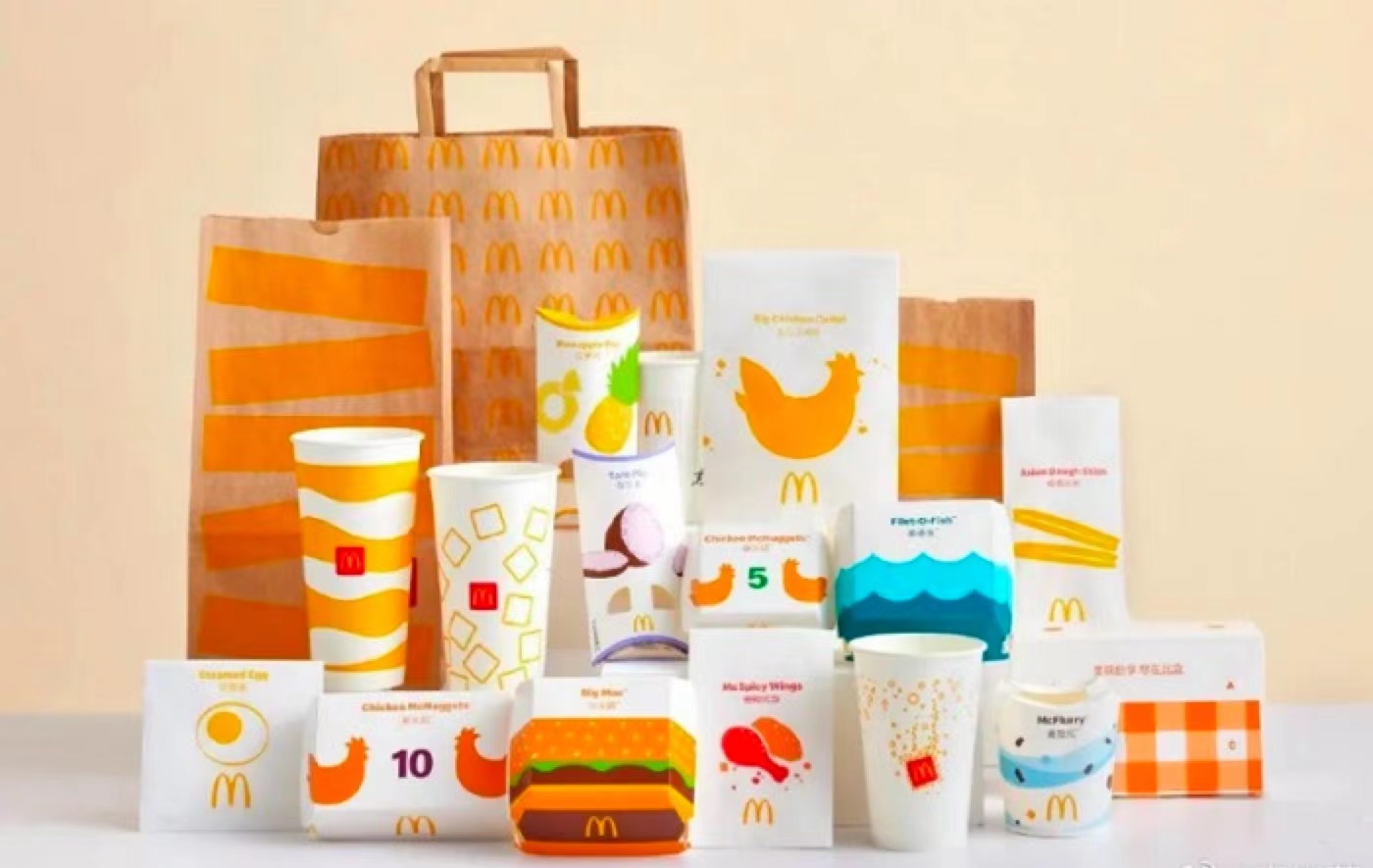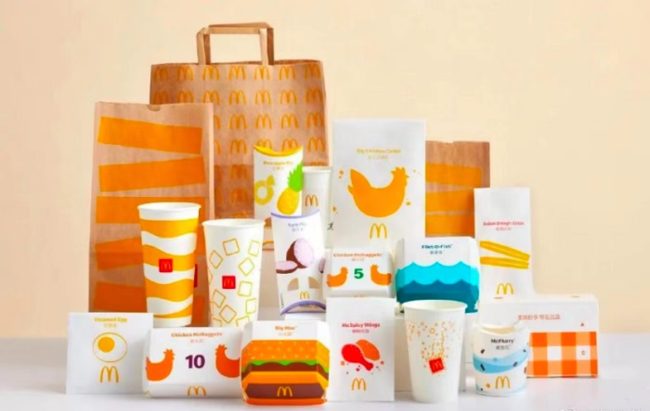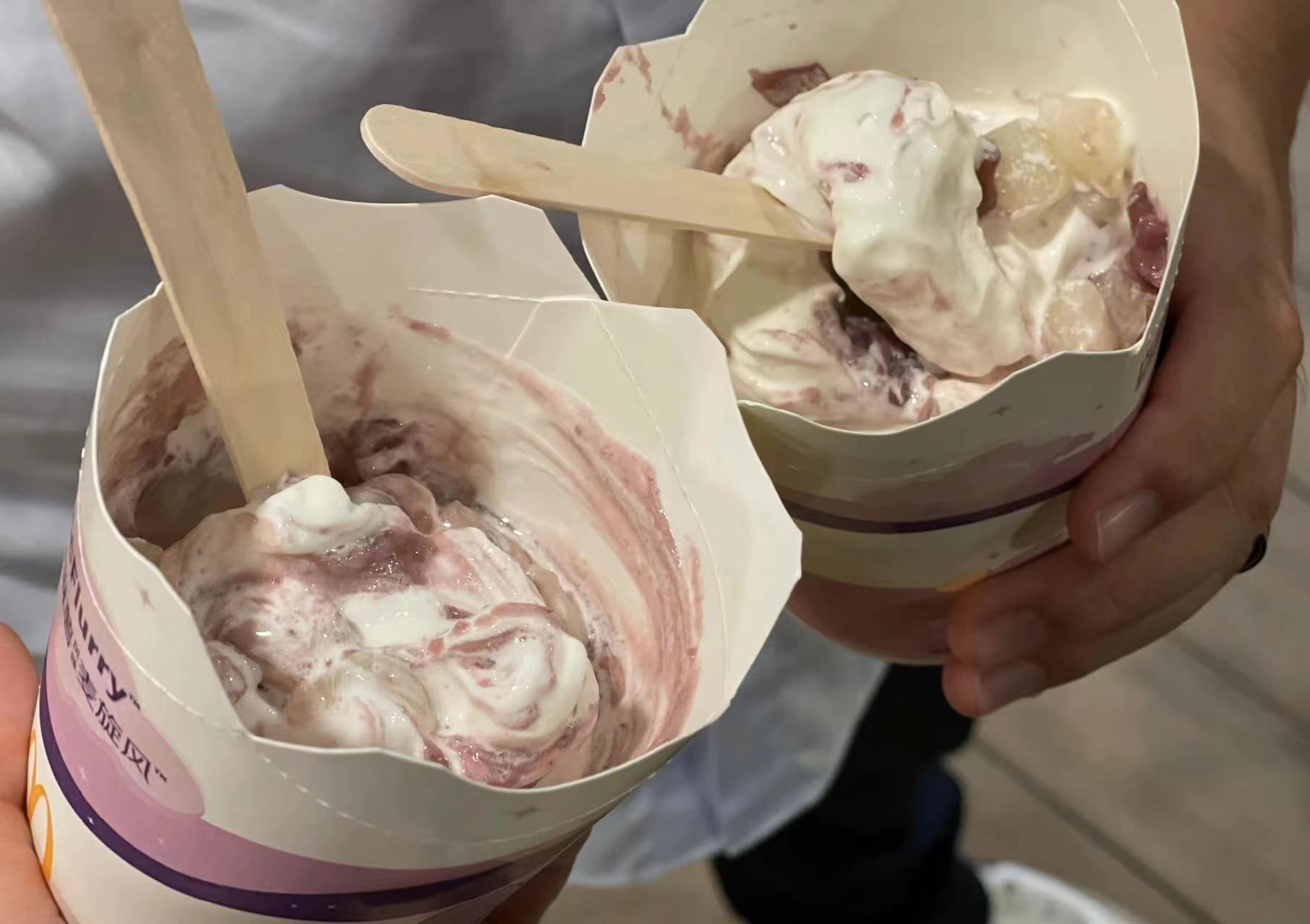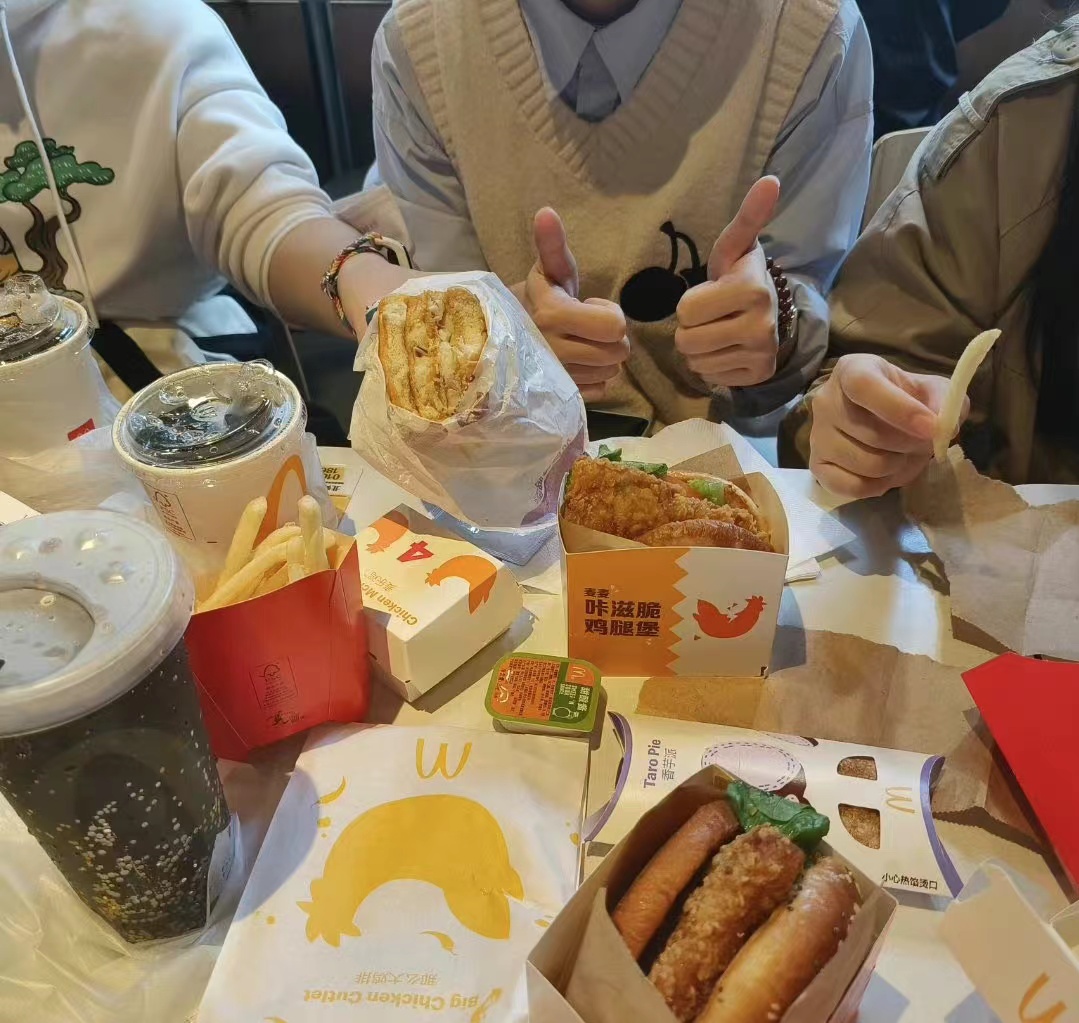
Sustainability in the fast food industry

When we mention McDonald’s, what is the first thing that comes to mind. is the bigmac or the chicken nuggets? The very smell you get when you enter McDonald’s.I think everyone has their own memories of McDonald’s. But for me, it’s not bigmac or chicken nuggets. It’s McDonald’s packaging. If you think about it, most of the packaging at McDonald’s seems to be made out of paper, the boxes with the chicken nuggets, the cups with the Coke, the packages with the delicious bigmac, or their doggy bags, almost all of the packaging is made out of paper. Even in recent years, when most restaurants decided not to allow straws, you can’t even see any plastic at McDonald’s. Even the ice cream spoons were made of wood. Except for the lid on the cup. So, in this episode of the podcast, I’m going to talk about why today’s restaurant companies are moving towards sustainability, what drives them to do so, and what are the benefits of doing so.
But first, I want to share with you what sustainability looks like in my city. The city I live in now is Shenzhen, where I was born and grew up. This is a city on the south coast of China, and near Hong Kong. shenzhen is one of the four first-tier cities in China. However, unlike other cities, Shenzhen has only been build 42 years, so it is not limited by tradition, but more about reform and innovation. So Shenzhen is particularly willing to try new things in terms of environmental protection, such as sustainable development in restaurants. Around September 2020, the Shenzhen government issued a ban for banning the non-biodegradable plastics in all shopping malls, supermarkets, pharmacies, bookstores and other places in the city, as well as fast fodd. This means that non-biodegradable plastic is no longer allowed for all cutlery in the fast food industry, including but not limited to cups, doggy bags or lunch boxes, etc.
As a result, most of the catering industry has been impacted, like milk tea. All milk tea shops no longer allow straws to be used, and they have to re-customize straws made of degradable materials, such as paper straws, or design cups for direct drinking. It’s also caused fast food restaurants and coffee shops like McDonald’s, KFC, or Starbucks to redesign their cups. Let consumers drink without straws. The benefits are obvious, the use of plastic will be greatly reduced, which is a huge help for the environment. But there are also many disadvantages. First of all, after changing the straw to the paper straw, many people complain that the paper straw is not durable and may be soft in 20 minutes. There is conge in the breakfast of McDonald’s in China. When the spoon for eating conge is changed from plastic to wood, some customers complain that the wooden spoon has a strange taste. When I eat ice cream, I also feel the strange taste from the wooden spoon.
So, for the restaurant industry, or fast food, to be sustainable you have to sacrifice part of the consumer experience. But most McDonald’s products do not affect the consumer experience. As mentioned in the beginning, they wrap their burgers in paper, or use paper to make doggy bags, which were widely used in McDonald’s around the world before the ban.
What is McDonald’s purpose in all this. To discuss this, I have to mention the harm of plastic.
We can start by looking at how much plastic waste the UK produces. There are no official figures yet, but in 2014 UK trade group Plastics Europe estimated that the UK would need to use 3.7 million tonnes of plastic a year. Among them, packaging waste accounted for the majority. according to the Environment Agency. In 2014, 2.2m tonnes of plastic packaging waste was generated across the UK, including bottles and plastic wrap used in fresh food. Of this large number, only 38 per cent, or 842,000 tonnes, of plastic packaging waste is recycled or reused. Defra statistics show that much of the waste recycled comes from households. In 2014, 428,000 tonnes of household plastic was recycled in the UK. By 2016, that number had risen to 475,000, Where did the rest of it go? Some are buried forever in landfills. Others took long trips overseas.
The United Nations has warned that Marine life is facing “irreparable damage” from millions of tonnes of plastic waste each year As we all know, plastic is a product of the last 60 or 70 years, a young product that has changed everything since its inception — from clothing, cooking and dining to product design, engineering and retail. Their greatest advantage is their long shelf life and their resistance to damage. But it also means that almost every plastic product ever produced now exists in nature in some form, and unabated.
In July 2017, Dr Roland, an industrial ecologist at the University of California, and colleagues published a paper in the journal Science Advances that calculated total plastic production to date at 8.3 billion tonnes. Of that, about 6.3 billion tons are now waste, and 79 percent of that is scattered in landfills or in the natural environment. This great waste is caused by modern life. Plastic is now mostly used to make single-use products — drinks bottles, diapers, cutlery, cotton swabs. Beverage bottles are one of the most common forms of plastic waste. Some 480 billion plastic bottles were sold worldwide in 2016 — a million bottles every minute, 110 billion of which were produced by Coca-Cola.
So how much plastic ends up in the ocean?
About 10 million tons a year…
In 2010, scientists at the National Center for Ecological Analysisand Synthesis and the University of Georgia i, This figure is estimated at 8m tonnes and is expected to rise to 9.1m tonnes by 2015.
What happens to all the plastic in the ocean?
They build up in the vortex of wind. There are five gyres in the world, the most famous of which is the North Pacific Gyre. It is estimated that it takes about six years for trash to travel from the coast of the United States to the center of the North Pacific Gyre, and only a year to travel from Japan. All five gyres had higher concentrations of plastic waste than the rest of the ocean. They are made up of tiny pieces of plastic that appear to be suspended below the surface of the sea, hence the nickname “plastic soup”. And the durability of most plastics means the waste can take hundreds of years to degrade
Why is plastic so bad for Marine life? For seabirds and larger sea creatures like turtles, dolphins and seals, they can get tangled up in plastic bags and other debris, or mistake the plastic for food. Turtles can’t tell the difference between plastic bags and jellyfish, which become part of their daily diet. Once eaten, plastic bags can cause internal blockages, often leading to death. Large pieces of plastic can also kill seabirds and whales by damaging their digestive systems. A recent study by Plymouth University found plastic in a third of all fish caught in the UK, including common seafood such as cod, haddock, mackerel and shellfish. These plastics can cause malnutrition or starvation in fish and contribute to plastic ingestion in humans. The exact effect on humans of eating fish containing plastic is still unknown. But in 2016, the European Food Safety Authority warned that risks to human health and food safety were increasing “given the possible presence of microplastic contamination in commercial fish eating tissues.”
The road of Sustainable development has a long history
Fast food giant McDonald’s has announced that it will adopt all sustainable packaging by 2025 to dramatically reduce packaging waste. Their goal is to make everything from cups and straws to wrapping paper and takeout bags from recycled or renewable materials. The company is also encouraging all its stores to recycle 100 percent of their packaging waste, up from 10 percent now. In fact, back in 1990, McDonald’s partnered with the Environmental Protection Foundation (EDF) to launch its first sustainable packaging design, which reduced packaging waste by more than 300 million pounds and approximately 30% over the next decade. The move comes after UK supermarket chain Iceland announced it would try to remove plastic packaging from all its own-brand products within five years. After that, the new products will use paper trays instead of plastic packaging. According to Nigel Broadhurst, co-managing director of Iceland, the typical fast food on the market today comes in poor packaging, with plastic trays that release toxins into the soil and are extremely difficult to recycle.
Francesca DeBiase, chief supply Chain and Sustainability Officer at McDonald’s, said, “As the world’s largest restaurant company, we have a responsibility to use our scale to lead changes that will have a profound global impact. Among them, packaging waste is the first environmental problem that customers urgently need us to solve. Our ultimate goal is to make changes that adapt to our customers’ needs — reducing packaging use, sourcing in a responsible way, designing packaging that is easy to recycle, and helping to build cleaner communities.”
Despite all our efforts, things are not looking very good. The company estimates that it may still be difficult for some stores to fully recycle packaging in 2025 because of differences in infrastructure, regulations and consumer behaviour around the world, but McDonald’s says it “wants to do what it can.”

McDonald’s, not alone
In addition to the fast-food industry, coffee shops are also hit hard by disposable tableware. Billions of disposable coffee cups are thrown away in the UK every year, most of them going to landfill. In response, MPS called for a 25p ‘latte tax’ on single-use coffee cups and proposed an outright ban on non-recyclable paper cups. Companies are also looking for their own strategies. The most common way is to offer discounts to customers who use recycled cups. Costa Coffee and Pret a Manger, for example, are offering customers discounts of up to 50p. And from next week, Greggs Bakery is cutting 20p off prices for customers who bring their own cups. However, some customers have complained on social media that they’ve seen baristas measuring drinks in disposable cups before pouring them into reusable containers – negating the whole point of exercise. And a study by Professor Wouter Poortinga of Cardiff University suggests that charging for cups may be more effective than discounts in changing consumer behaviour. He conducted a series of experiments in 12 coffee shops and found that if the store offered free reusable coffee cups and charged for disposable paper cups, the number of customers who chose eco-friendly paper cups increased by nearly 20 percent.

In conclusion, it doesn’t matter why McDonald’s is so concerned about sustainability, whether it is as a marketing tool or otherwise, but it does do something for environmental protection and sustainable development. As the largest fast food restaurant in the world, it can serve as an example for other fast food restaurants. We need more of these sustainability conscious businesses, not just for the environment, but for ourselves.
Reference:
Sork, V. L., Campbell, D. R., & Dyer, R. J. (2015). (PDF) National Center for Ecological Analysis and Synthesis – Researchgate. Retrieved October 16, 2022, from https://www.researchgate.net/publication/277287858_National_Center_for_Ecological_Analysis_and_Synthesis
GEYER, R., JAMBECK, E. R., & LAW, K. L. (2017, July 19). Production, use, and fate of all plastics ever made – science. Retrieved October 16, 2022, from https://www.science.org/doi/10.1126/sciadv.1700782
United Nations | Peace, dignity and equality on a healthy planet
http://sz.bendibao.com/news/2020824/844550.htm
https://www.jiemian.com/article/1952965.html
G. (2020, May). Microplastics: An emerging threat to food security and human health. Retrieved October 16, 2022, from https://www.ncbi.nlm.nih.gov/pmc/articles/PMC7171031/
Plastics Europe • Enabling A Sustainable Future. (n.d.). Retrieved October 16, 2022, from https://plasticseurope.org/
